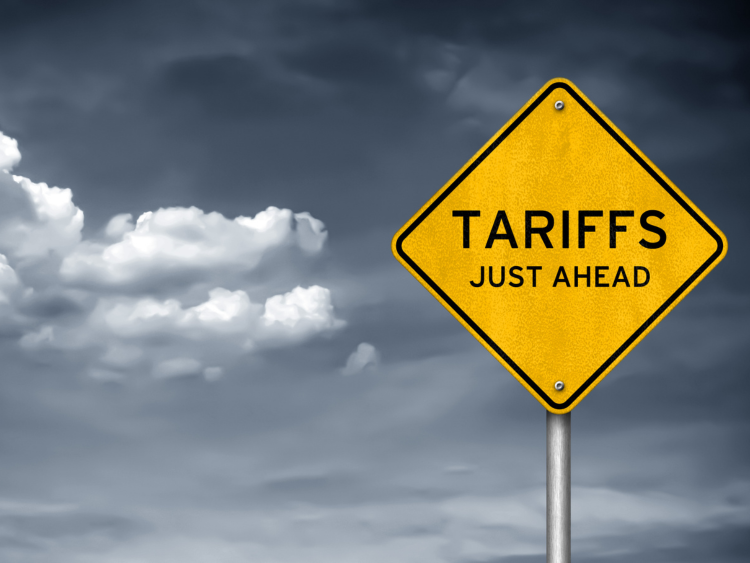Features

CRU: Trump tariff threat signals early start to trade negotiations
Written by Josh Spoores
December 6, 2024
We previously published an insight on Nov. 18 discussing how a second Trump presidency might affect steel products in the USA. Our key takeaway was that President Trump would wield tariffs liberally, which would lead to higher demand for steel over a two-to-four-year time frame – as long as the administration can remain focused and on track for this outcome.
One way of using tariffs in this manner is to reopen negotiations on trade agreements and, ideally, score other political wins along the way. President-elect Trump has wasted no time in this endeavor as he has now swung his tariff hammer eight weeks before he returns as president.
Trump threatens across-the-board tariffs on Canada and Mexico and an increase on China
On Nov. 25, just under two months before President-elect Trump takes office, he threatened to place 25% tariffs across all imports from Canada and Mexico – two key trading partners of the US. In addition, he also said he would add 10% to all existing tariffs on China. His statement is below:
“On January 20th, as one of my many first Executive Orders, I will sign all necessary documents to charge Mexico and Canada a 25% Tariff on ALL products coming into the United States, and its ridiculous Open Borders.” Additionally, he stated the tariffs would remain in effect until conditions on drugs and immigration were met.
Compare this to what was announced by then-President Trump over five years ago on May 30, 2019:
“On June 10th, the United States will impose a 5% Tariff on all goods coming into our Country from Mexico…” Here, Trump also stated that tariffs would be increased until immigration conditions were met.
While details were to follow, no tariffs on Mexico ended up taking place following that tweet in 2019.
The scope of these proposed tariffs cannot be understated
President-elect Trump has threatened to place tariffs across all products exported from Canada and Mexico into the US. The ramifications are massive, as the top products consist of oil, gasoline, and motor vehicles, including automotive parts.
The trade value of these three categories totaled around $300 billion in 2023 – yet what is more important is what a 25% tariff would do to the US economy if applied to a barrel of oil, gallon of gasoline, or a new vehicle. In the short term, it simply means dramatically higher sustained costs, which will lead to lower consumption, pressured business earnings, and reinvigorated inflation.
Over a longer term, if these tariffs are permanent, they could provide renewed stimulus to oil production in the US while also supporting the drawn-out process of moving supply chains from Canada and Mexico to the USA, or elsewhere.
If applied, tariffs may temporarily support steel prices before lower demand reverses that price trend
The US is a net exporter of steel to Mexico and a net importer of steel from Canada. If tariffs are applied, we expect both Canada and Mexico to retaliate, though the extent of that retaliation may not directly affect steel. Regardless, a 25% tariff on steel from Canada and Mexico is substantial as these countries are the two largest sources of steel imports to the US, so in this scenario, steel prices in the US will increase.
However, as these tariffs are implemented, demand for steel will be negatively affected, as these tariffs will disrupt supply chains for automotive and manufacturing – two end uses that consume around 40% of steel in the US.
In summary, expect trade negotiations rather than economic brinksmanship
In President Trump’s first term, he often started negotiations from a point of leverage. In this instance, he can generate negotiating leverage as he is willing to take on damage to the US economy, knowing that the Canadian and Mexican economies will be hurt more.
The top three trading partners of the US in order are Mexico, Canada, and China, accounting for 42% of all trade in 2023. While the US depends on all three for various goods, it is the top trade destination for each country. This means Canada, China, and Mexico are heavily dependent on trade with the US, potentially more than the US is dependent on them.
We expect that these tariff threats are meant to kickstart negotiations over trade as well as other areas of cooperation. Contrary to the tariff threat in May 2019, we expect meaningful negotiations to come about in early 2025. President Trump could use this leverage to force new terms on these trading partners and this could become an early win for his presidency.
The simple threat of these tariffs is likely to lead to some hoarding of steel within the US supply chain. Yet, if the tariffs are put on hold pending negotiations and a new trade deal is announced, we would expect steel prices in the US to return to a balance over costs as well as near-term supply and demand expectations. However, if tariffs are applied and remain for any prolonged period, there are no winners – only losers – due to the ultimate scope of these tariffs.
CRU Principal Analyst Josh Spoores can be reached at +1 724 759 7863 and josh.spoores@crugroup.com.
This analysis was first published by CRU. To learn about CRU’s global commodities research and analysis services, visit www.crugroup.com.

Josh Spoores
Read more from Josh SpooresLatest in Features

Holiday Notice: Fourth of July
SMU will be closed on Friday, July 4, with no Sunday newsletter on Sunday, July 6.

Final Thoughts
I’m not sure how many different ways I can write that it’s been a quiet market ahead of Independence Day. There are variations on that theme. I’ve heard everything from the ominous “eerily quiet” to "getting better" and even the occasional “blissfully unaware” (because I’m enjoying my vacation).

SMU’s Week in Review: June 30-July 3
It will be a shorter week as the United States celebrates Independence Day on Friday. But we won’t leave you high and dry.

Steel groups welcome passage of budget bill
Steel trade groups praised the passage of the Big Beautiful Bill (BBB) in Congress on Thursday.

Drilling activity down further in US, climbs in Canada
The rig count declined for the 10th consecutive week in the US, while Canadian count rose for the fifth straight week, according to Baker Hughes.
